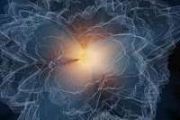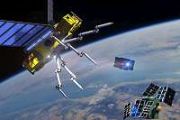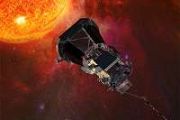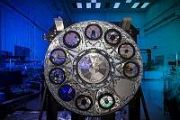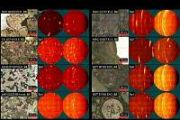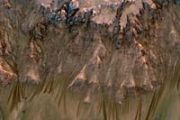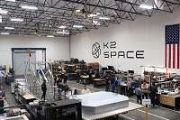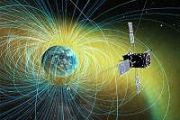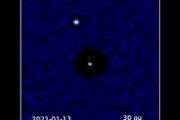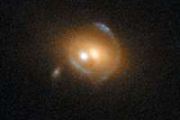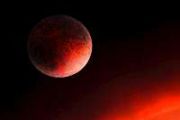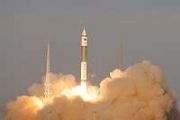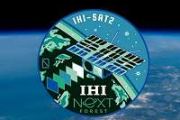
Copernical Team
NASA spots giant debris cloud created by clashing celestial bodies
 Major smashups between rocky bodies shaped our solar system. Observations of a similar crash give clues about how frequent these events are around other stars. Most of the rocky planets and satellites in our solar system, including Earth and the Moon, were formed or shaped by massive collisions early in the solar system's history. By smashing together, rocky bodies can accumulate more material,
Major smashups between rocky bodies shaped our solar system. Observations of a similar crash give clues about how frequent these events are around other stars. Most of the rocky planets and satellites in our solar system, including Earth and the Moon, were formed or shaped by massive collisions early in the solar system's history. By smashing together, rocky bodies can accumulate more material, Black swifts descended rapidly during lunar eclipse
 An international research team led by Lund University in Sweden has managed to study the flight behaviour of the mysterious black swift. They found, among other things, that the black swift rises to extreme heights during a full moon, seemingly catching insects in the moonlight. And, during a lunar eclipse, the birds simultaneously lost altitude. The results are published in Current Biology.
An international research team led by Lund University in Sweden has managed to study the flight behaviour of the mysterious black swift. They found, among other things, that the black swift rises to extreme heights during a full moon, seemingly catching insects in the moonlight. And, during a lunar eclipse, the birds simultaneously lost altitude. The results are published in Current Biology. New insight into the possible origins of life
 Researchers at the University of Tokyo have for the first time been able to create an RNA molecule that replicates, diversifies and develops complexity, following Darwinian evolution. This has provided the first empirical evidence that simple biological molecules can lead to the emergence of complex lifelike systems.
Life has many big questions, not least being where did we come from? Mayb
Researchers at the University of Tokyo have for the first time been able to create an RNA molecule that replicates, diversifies and develops complexity, following Darwinian evolution. This has provided the first empirical evidence that simple biological molecules can lead to the emergence of complex lifelike systems.
Life has many big questions, not least being where did we come from? Mayb Report to Congress on Hypersonic Weapons
 The United States has actively pursued the development of hypersonic weapons-maneuvering weapons that fly at speeds of at least Mach 5-as a part of its conventional prompt global strike program since the early 2000s. In recent years, the United States has focused such efforts on developing hypersonic glide vehicles, which are launched from a rocket before gliding to a target, and hypersonic crui
The United States has actively pursued the development of hypersonic weapons-maneuvering weapons that fly at speeds of at least Mach 5-as a part of its conventional prompt global strike program since the early 2000s. In recent years, the United States has focused such efforts on developing hypersonic glide vehicles, which are launched from a rocket before gliding to a target, and hypersonic crui A large solar storm could knock out the power grid and the internet
 On Sept. 1 and 2, 1859, telegraph systems around the world failed catastrophically. The operators of the telegraphs reported receiving electrical shocks, telegraph paper catching fire, and being able to operate equipment with batteries disconnected. During the evenings, the aurora borealis, more commonly known as the northern lights, could be seen as far south as Colombia. Typically, these light
On Sept. 1 and 2, 1859, telegraph systems around the world failed catastrophically. The operators of the telegraphs reported receiving electrical shocks, telegraph paper catching fire, and being able to operate equipment with batteries disconnected. During the evenings, the aurora borealis, more commonly known as the northern lights, could be seen as far south as Colombia. Typically, these light SpaceX puts another 53 Starlinks in orbit with midnight launch
 Elon Musk's SpaceX launched 53 Starlink satellites from Florida early Saturday morning after a short delay. The company was scheduled to launch the spacecraft on a Falcon 9 rocket at 11:23 p.m. EDT from Complex 40 at Cape Canaveral Space Force Station. Liftoff time was instantaneous, meaning any problems could prompt a delay of about 24 hours to Saturday night.
Elon Musk's SpaceX launched 53 Starlink satellites from Florida early Saturday morning after a short delay. The company was scheduled to launch the spacecraft on a Falcon 9 rocket at 11:23 p.m. EDT from Complex 40 at Cape Canaveral Space Force Station. Liftoff time was instantaneous, meaning any problems could prompt a delay of about 24 hours to Saturday night. NASA's Perseverance rover hightails it to Martian Delta
 The rover's self-driving capabilities will be put to the test this month as it begins a record-breaking series of sprints to its next sampling location.
NASA's Perseverance Mars rover is trying to cover more distance in a single month than any rover before it - and it's doing so using artificial intelligence. On the path ahead are sandpits, craters, and fields of sharp rocks that the rover
The rover's self-driving capabilities will be put to the test this month as it begins a record-breaking series of sprints to its next sampling location.
NASA's Perseverance Mars rover is trying to cover more distance in a single month than any rover before it - and it's doing so using artificial intelligence. On the path ahead are sandpits, craters, and fields of sharp rocks that the rover SpaceX aims for late night Starlink launch
 Elon Musk's SpaceX plans to launch 53 Starlink satellites from Florida late on Friday night, days after the company marked its 20th anniversary.
The company aims to launch the spacecraft on a Falcon 9 rocket at 11:23 p.m. EDT from Complex 40 at Cape Canaveral Space Force Station. Liftoff time is instantaneous, meaning any problems could prompt a delay of about 24 hours to Saturday night
Elon Musk's SpaceX plans to launch 53 Starlink satellites from Florida late on Friday night, days after the company marked its 20th anniversary.
The company aims to launch the spacecraft on a Falcon 9 rocket at 11:23 p.m. EDT from Complex 40 at Cape Canaveral Space Force Station. Liftoff time is instantaneous, meaning any problems could prompt a delay of about 24 hours to Saturday night Standing tall: Moon rocket milestone for Artemis
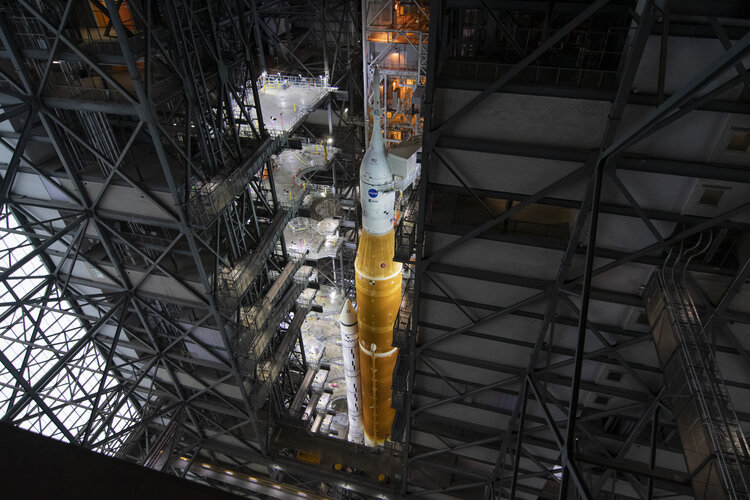
Artemis I rocket rolls to launch pad at Kennedy Space Center
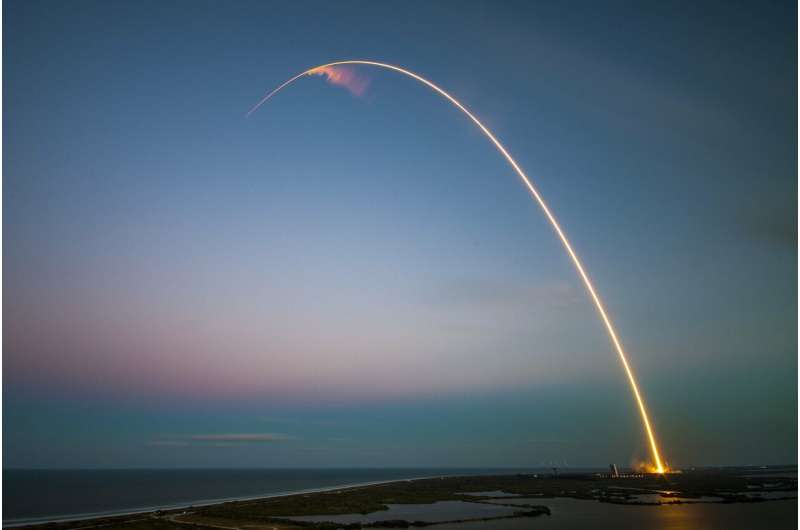
The first trip to the moon for NASA's new rocket has one more major hurdle, but it's taking the jump nice and slow as Artemis I began its 4.4-mile journey with a top speed of 0.8 mph to the launch pad Thursday.
The 5.75-million-pound, 322-foot-tall combination of the Space Launch System, Orion capsule and mobile launcher were placed on NASA's crawler-transporter 2 for the 11-hour trip that began just before 6 p.m. to Launch Pad 39-B, where mission managers plan on doing a wet dress rehearsal within the next month.
Thousands crowded the parking lots and open fields surrounding the Vehicle Assembly Building cheering as NASA Administrator Bill Nelson spoke with the towering hardware in the background.
"There's no doubt that we are in a golden era of human space exploration, discovery and ingenuity in space, and it all begins with Artemis I," he said, thanking the NASA employees and family members gathered for the event. "Our workforce has been a relentless spirit. We imagine. We build. We never stop pushing the envelope of what is possible."
Also speaking was Kennedy Space Center director Janet Petro, who pointed out Artemis was following in the trail of 60 years of space exploration.




